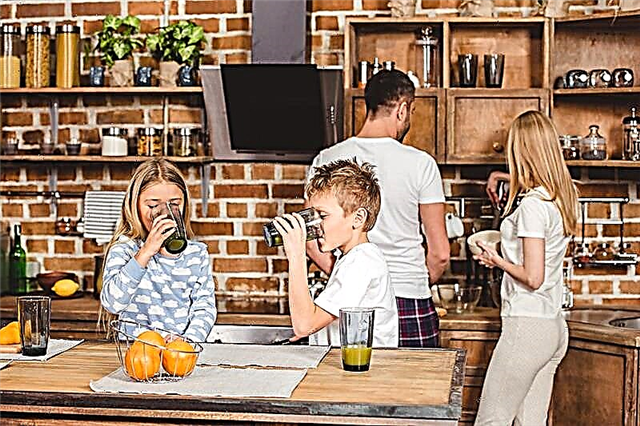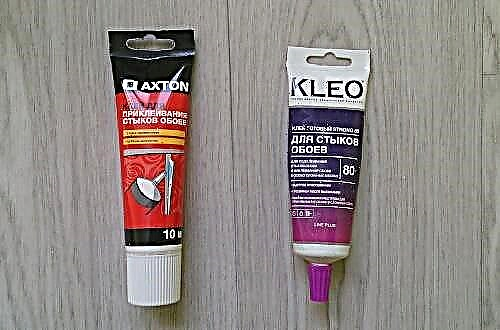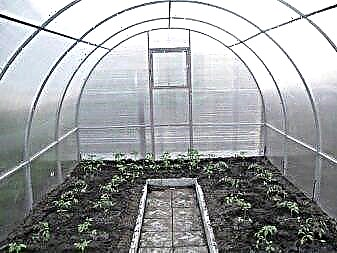The organization of the working space in the kitchen is not only the installation of a triangle and the selection of a convenient headset. It is also important to organize the storage of food supplies, kitchen utensils, dishes.

A convenient option is the hanging cabinets. They perform several functions at once:
- protect contents from direct sunlight, temperature, humidity, steam and condensate,
- allow you to maintain order in the working area,
- make it possible to ergonomically place everything you need,
- save space in the kitchen, which is especially true for small rooms,
In this article we will talk about how to choose the wall cabinets for the kitchen.



Materials
Modern kitchen cabinets are made from a variety of materials. They differ both in price and in their characteristics. Consider the most popular options.
Chipboard lockers - one of the most inexpensive. Various design decisions, wide color palette, attractive price. Such cabinets weigh a little, so they can be installed on curtain walls. However, the quality often leaves much to be desired - the material is very short-lived and easily deformed.



A more modern option is laminated particleboard. Such cabinets are characterized by higher strength and moisture resistance, they are not deformed due to changes in temperature and steam. In addition, they look more attractive than their non-laminated counterparts. The price is also quite affordable. However, it is necessary to responsibly approach the choice of the manufacturer - if the lamination is performed poorly, such a cabinet will not last long.



Plywood wall cabinets cost more, however, and will last you a long time. When choosing a cabinet from plywood, pay attention to what paint and varnish the surface is coated with. Their moisture resistance and service life depend on them.


Cabinets from MDF can not be considered budgetary, however, they surpass all options in quality. MDF is often used as a base for coating - plastic, acrylic, glass.



Cabinets made of solid wood are of high quality, long service life and high price. They fit perfectly into the most elegant interiors and retain their impeccable appearance for many years.





Sometimes in stores you can find glass or plastic wall cabinets for the kitchen. It is important to understand that they are not made entirely of these materials. The basis is most often MDF, and glass and plastic go only to the facades - otherwise the furniture would be too fragile.



Dimensions
The dimensions of hanging kitchen cabinets should be selected based on the area of the kitchen, the height of the walls and the needs for a place to store kitchen equipment.
However, there are certain standards:
- The optimal distance between the work surface and the wall cabinets is 45 centimeters. It’s convenient enough, and you don’t have to reach far for essentials.
- The depth of the wall cabinet should be less than the width of the countertop headset. The most convenient option according to furniture designers is 30 centimeters. On this shelf, you can easily place everything you need.
- Choosing the height of the wall cabinets, think about how you will get dishes and utensils from the upper shelves. Furniture makers recommend making lockers no more than 70 centimeters high.




Idea! If you have a small kitchen and need a lot of shelves, install hanging cabinets under the ceiling. On the upper shelves you can store rarely used equipment and supplies of groceries.




Optimum dimensions vary for wall and corner hanging cabinets. We offer a table of sizes that will help you navigate when choosing wall cabinets.
| Wall | Corner | |
| Height | 35-70 centimeters | 35-70 centimeters |
| Depth | 40-120 centimeters | 40-120 centimeters |
| Latitude | 30-40 centimeters | 20-30 centimeters |
It is important to understand that all of these dimensions are just a guideline. You need to make a choice, based on your own convenience, the size of the kitchen, type of headset.
The form
In addition to sizes, you will also have to decide on the desired shape. Variations are also possible here.



Narrow Wall Cabinets for the kitchen are convenient in small rooms or if you are not particularly fond of cooking. They are much less spacious than wide counterparts, but practically do not take up space. If you have a few dishes - this is a great option.


Corner Hanging Cabinet for the kitchen is often part of a corner or p-shaped set. It is less spacious than direct cabinets. However, even 25-30 centimeters of additional area greatly simplify the organization of storage of food stocks and kitchen equipment.




Kitchens with hanging cupboards to the ceiling, As we already wrote, a practical solution for small rooms. By the way, this approach is also justified from the point of view of hygiene - everyone who has at least once done a general cleaning in the kitchen knows how hard it is to wash the greasy stains with adhering dust formed on the upper panels of such cabinets.



Tall Wall Cabinets justified if you are sure that it will be convenient for you to get items stored on the upper shelves. On the other hand, they save space. So think about how comfortable it will be for you to work with them.


Horizontal wall mounted cabinets, not too tall, but elongated ideal for a spacious kitchen. In addition to the obvious convenience, there is another plus - washing such cabinets is much easier than tall ones.



If you do not need to store several sets of pans and pans, a strategic supply of cereals and seasonings, think of small wall cabinets. Thanks to the open walls, the kitchen will look much more spacious than it really is.


Advantages and disadvantages
Hanging cabinets are a convenient option, because they fit perfectly into the design of any room. The great demand for such furniture is justified by a number of advantages.
- It is versatile and comfortable to use furniture. It is perfectly combined with any kind of interior decoration. Today there is a considerable variety of species for the production of which various materials are used (MDF, chipboard, fiberboard, metal, plastic, glass) and structural parts (hinged or sliding doors, shelves of various configurations, the presence of dryers, decorated lights).
- Installation of wall cabinets in the kitchen will give the ability to rationally place utensils and household appliances. As a rule, furniture is installed under the ceiling. As a result, the work space is unloaded, and the dining area is increased, which is especially important for a small kitchen.
- The furniture is endowed with small dimensions and has traditional colors. Such characteristics are suitable for rooms decorated in a minimalist style. The presence of samples with various parameters and configuration allows the installation of hanging cabinets in any area of the room.
For detailed and true characteristics of wall-mounted storage systems, it is necessary to have an idea about the disadvantages of this furniture:
- it is necessary to take into account the reliability of the wall on which the cabinet made of solid wood will hang, since the mass of the structure with filling can become too heavy for partitions made of plastic, drywall,
- mass restriction of cabinet contents,
- difficult access for small family members.
Door opening method
A seemingly insignificant question deserves special consideration. So, in a small kitchen, cabinets with vertically open doors can be very uncomfortable. In total, there are three types of the mechanism for opening doors of hanging cabinets: swing, sliding and hanging. Let's consider in more detail.
Swing doors familiar to all, opening to the side, are attached to furniture hinges, which are installed on the frame of the front part. If you prefer these options, pay particular attention to the angle of disclosure. It can range from 90 to 180 degrees.
This is the most reliable system. Such cabinets can last up to 50 years if the hinges are properly fitted.
When installing, it is important to make sure that the doors open freely without bumping into walls and other furniture - otherwise the service life will be significantly reduced.



For small kitchens, it is better to give preference to sliding modules. Their minus is the inability to provide access immediately to the entire locker. In fact, one door just slides behind another. However, such cabinets occupy a minimum of space, which must be taken into account - in small kitchens. They cost a little more. The sliding mechanism of high quality can last up to 20 years.

Fashionable cabinets with a vertical lifting mechanism are convenient, but not always. Keep in mind that most often the door rises above the headset, so in kitchens with low walls you can damage it, and in rare cases, even the ceiling. High-quality vertical lifting mechanism can work without interruption up to 15 years. If you like just such cabinets, pay attention to models with a friction lift - it will allow you to fix the cabinet door in a convenient position, and does not swing open to the maximum.



Backlight
Another advantage of hanging cabinets for the kitchen is the ability to install additional lighting over the work area. For these purposes you can use Spotlightsinstalled in the bottom of the cabinets. This technique allows you to get a well-lit countertop.



Another interesting move - use of led strip. Soft backlighting is not practical, but plays an important visual role. With this decoration, the kitchen seems taller and more spacious.



Why it is worth contacting us to buy wall-mounted cabinets 92 cm?
Specialists of our company Kuhni-Vardek.ru will make for you cabinets wall mounted 92 cm of any modification. You will be able to choose exactly the hinged piece of furniture that is ideal for the design of your kitchen.
If you experience difficulties with the independent choice of such a product, then qualified designers of our company will come to your aid, they will be able to professionally recommend that product option that fits perfectly into the interior of the room.
How to hang
Installing a hanging cabinet in the kitchen yourself is not too difficult.
Nuance! All lighting and electrical wiring work must be completed before the cabinets are installed, otherwise they may need to be dismantled.
First, make sure you have everything you need:
- base for fasteners,
- directly the cabinets themselves (if you have not previously encountered the installation of cabinets, we recommend that you hang up the already assembled version),
- nails, screws,
- screeds
- drill or punch (depending on the type of wall)
- pencil, ruler, building meter,
- level to hang cabinets in one line,
- screwdriver
- hammer,
- hacksaw.
After making sure that everything is in stock, proceed directly to the work.
Important! Before proceeding directly with the installation of cabinets, prepare a “work surface”. Level the walls, if necessary, putty them. If the lower part of the headset is already installed, cover it with tape - construction debris can scratch the work surface.
Using the building level, mark the desired location for the cabinet suspension. Use the information above, measure the walls and draw a dotted line at the installation site of the cabinets. It is better to carry out work on measurement with an assistant - one measures the wall level, the second marks the installation points.
Please note that on a drywall wall cabinets (especially heavy ones from arrays) are better not to hang too high - the wall may become deformed. Also note that in any case there will be a small distance of a few millimeters between the furniture and the wall. In order for the cabinet to hang symmetrically, it is necessary to install two rails - on the upper or lower edge. Use a drill and fasten the rails in increments of 5-6 centimeters.
When installing hanging cabinets, builders can use suspensions, but if you haven’t done this kind of work before, it’s better to stay on rails: this method allows you to install quickly and with high accuracy.
In addition, in this case, the weight of the cabinet is distributed evenly, which reduces the load on the walls. After installing the rails, prepare holes for the dowels in them. Take a step of 8-10 centimeters. However, if you are not sure about the strength of the wall (most often this problem occurs in old houses), it can be reduced.
Remove the shelves and doors from the cabinet (if they are sliding or swinging, it is better to leave the vertical ones in place if you are not sure that you can fix them correctly) and hang the cabinets. After making sure that they are lined up in a straight line, connect them with a screed. After that, you can install the doors and shelves. Final clean the room. Your wall mounted lockers are ready for use!



